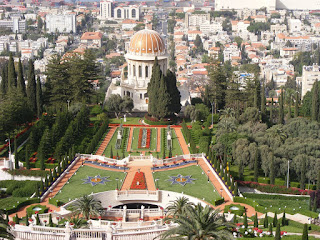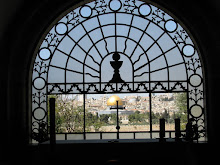Haifa
Built on the slopes of biblical Mount Carmel, Haifa is the third-largest city of Israel. The word Haifa means 'beautiful beach' in Hebrew. Located 90 km north of Tel Aviv (250 km from our campus), Haifa lies on the beautiful shores of Mediterranean coastline with 17 km long beaches. Haifa is home to a population of diverse faiths including Jews, Arabs, Christians, Druze, and Bahai. Modern Haifa boasts the possession of academic gems like the University of Haifa and the renowned Technion Institute (The IIT of Israel). The city is also one of the hubs of Israeli Information Technology with a number of hi-tech parks. It is said that, world's first cell phone was developed in Haifa's Motorola Lab.
Haifa was known even in the 3rd century BC as a dye making center. Later history of Haifa has been under the influence of the Byzantines, Arabs, Crusaders, Ottomans, Egyptians and the British. However it was the major events in the lives of biblical Prophets Elijah and his disciple Elisha (around Mt Carmel and Kishon River) made Haifa an important city for Jews, Christians, Muslims and Druze. Later the "Bahai World Center" (Head quarters of Bahai faith) was established here. The "Cave of Elijah" (traditional home of Elijah), "El-Muhrrakah" (where Elijah confronted priests of Baal) and "Stella Maris Carmelite Monastery" (the world epicenter of Carmelite Order and also one of the caves where Elijah lived) are some of the other attractions in Haifa.
The Trip
Passover the biggest festival in Israel is time for family get together and traveling for most Israelis. Moreover, it brings 1 week official holiday in Israel and naturally our University was also not an exception. I took this opportunity to go north to see the city of Haifa and nearby areas. To our good luck we got a flat for 4 days in Haifa through some friends and that was the green signal to say YES to the trip. We were a small group of six. Started our journey at 7 am, April 21 from Sede Boker and took the train (Rakevet in Hebrew) at 8.27 am from Beer Sheva to Haifa. The train took almost 3 h and passed through cities like Kiryat Gat, Tel Aviv, Herzeliya. From Haifa Central Station, we took the city bus 3 to a place called Hadar and walked to our flat at Herzel Street.
To summarize the whole trip: 4 days and 3 nights;
21 April: Elijah's Cave, Stella Maris Monastery and Haifa beach;
22 April: Muhraka and Bahai world centre;
23 April: Rosh Hanikra and Acco;
24 April: Haifa city again and Shopping….
During return trip, we took the train from Haifa Bat Galim station at 5.15 pm (24 April) and reached Beer Sheva at 7.45 pm. From Beer Sheva, we rushed to catch the 8.00 pm Metropolin 60 to Sede Boker and were back home by 9.00 pm…...
Two sides of the coin
I would like to share two incidents which really describe the efficiency of Israeli system. About the first incident; we hired a taxi from Haifa to Rosh Hanikra and after getting down at Nahariya (the main city near Rosh Hanikra) we realized that one of our group member left her camera inside the taxi. None of us had any clue about the taxi (number, model, station it belonged etc) or the driver (name, contact no etc). Lucky enough, just near where we got down there was a help center. We narrated the incident and that the taxi was hired from Haifa (the only information we had). The officer asked us not to panic and wait for a few minutes. To my surprise within 30 minutes a taxi appeared the spot with our camera. I still don’t know how they managed to contact the driver with such limited information and in such short time span. Had it happened in any other country things wouldn’t have been that easy! The other incident was in Haifa where a speeding car hit a woman while giving space to another vehicle and all at a sudden the whole traffic was blocked. None of the drivers left the spot and the crowd was also well mannered. The ambulance and police reached the spot immediately and normality was restored. I was checking my watch and believe me the whole process took less than 5 minutes!
Now to the other side of the coin…..It was my first experience with Israeli railways. The travel was much comfortable and worth an experience. But just to enter the railway station I had to follow all the weird formalities like showing my passport, sending baggage through x-ray machine, security check ups and answering questions like do you carry weapons! Even in bus stations, guards sometimes look at you suspiciously and try to speak to you just to know your psychology! Any supermarket you enter the security asks to open your bag and start scanning every corner of your bag with his hands. Enter any public bus; at least 50 % of your fellow travelers will be young soldiers carrying M15 machine guns. WELCOME TO ISRAEL!












































